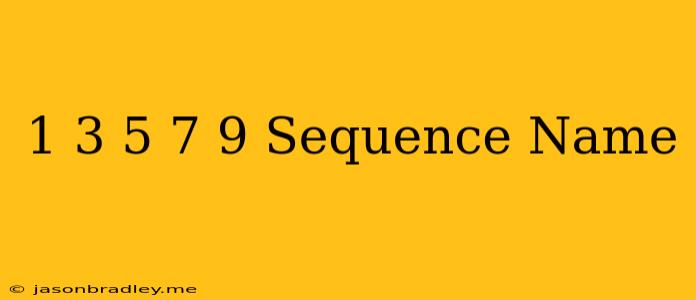The Enigmatic Sequence: 1, 3, 5, 7, 9
The sequence 1, 3, 5, 7, 9 is a simple yet intriguing pattern. While its straightforward nature might make it seem unassuming, it holds a special place in mathematics and has various applications. Let's explore its significance:
The Odd Numbers: A Fundamental Concept
At its core, the sequence represents the odd numbers, which are integers that are not divisible by 2. This fundamental concept is crucial in numerous areas of mathematics, including:
- Number Theory: Odd and even numbers form the basis for many theorems and proofs in number theory.
- Arithmetic: Odd numbers are used in various arithmetic operations, like finding sums and differences.
- Algebra: Odd and even numbers play a role in algebraic expressions and equations.
Beyond the Basics: Recognizing Patterns
The sequence 1, 3, 5, 7, 9 can be expressed in different ways:
- Arithmetic Sequence: The sequence is an arithmetic progression with a common difference of 2. This means each term is obtained by adding 2 to the previous term.
- Formula: The sequence can be represented by the formula 2n - 1, where n is a natural number. This formula generates the odd numbers in the sequence.
Applications in Various Fields
The sequence of odd numbers has applications beyond pure mathematics:
- Computer Science: The concept of odd and even numbers is used in algorithms and data structures.
- Cryptography: Odd and even numbers play a role in certain encryption techniques.
- Physics: In areas like quantum mechanics, odd and even numbers are used to describe certain properties of particles.
Conclusion
While seemingly simple, the sequence 1, 3, 5, 7, 9 encapsulates a fundamental concept that has profound implications in mathematics and beyond. Its recognition as the sequence of odd numbers makes it a building block for various theoretical frameworks and practical applications. The sequence serves as a reminder that even the most basic patterns can hold hidden depths and contribute significantly to our understanding of the world around us.
